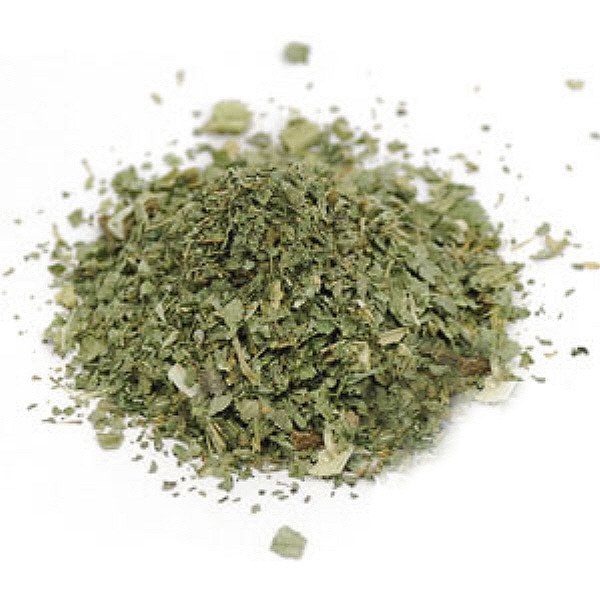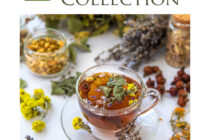MILK THISTLE LEAF and SEED ORGANIC
Silybum marianum. Milk Thistle is sometimes called Silymarin, which is actually a mixture of the herbs active components, including silybinin (also called silibinin or silybin). Like silymarin extract, milk thistle seed can cause mild diarrhea by stimulating the release of bile. This effect is most notable if there is a high-fat diet. Item No: 1435-50
SHOP MILK THISTLE LEAF AND SEED
Milk Thistle
Blessed Milk Thistle, Mary Thistle,
Holy Thistle
Silybum marianum
Milk Thistle is one of the most common garden and roadside “weeds” that one will come across on a summer’s stroll or country tour – it is rather obvious with its spiky leaves, purple flowers, and fluffy seeds. It is named for the milky secretions that appear on its leaves — supposedly to represent the breast milk of the Virgin Mary who was said to have breastfed while sitting near these thistles. Thus it was used historically to stimulate the flow of breast milk. Its use as a hepato-protective, for conditions of jaundice, cirrhosis, mushroom poisoning and even hangovers have been documented since the time of the Dioscorides the First Century Roman Physician to Nicholas Culpepper’s to the beginnings of clinical research in the 1930’s up until today.
Medicinally, the aerial parts of the Milk Thistle plant are used — the leaves and seeds. The active component(s) of the seeds is silymarin which is composed of the flavonolignans silibinin (in majority), isosilibinin, and silichristin and silidianin in smaller amounts. These constituents quickly enter enterohepatic circulation and accumulate in hepatic cells. Once in the cells silymarin alters the outer hepatic cell membrane to prevent the penetration of toxins, releases toxins out of the cell before they can do any damage, as well as stimulating hepatogenesis — this is in part why milk thistle is such a potent hepato protective and detoxification aid. Silymarin also inhibits Tumor Necrosis Factor (TNF) – blocking its cytotoxic, inflammatory and apoptotic effects. The antioxidant properties of this component are also thought to help reduce oxidative damage to the beta pancreatic cells — those that are responsible for insulin production — and thus be helpful for decreasing insulin resistance and blood glucose and lipid levels in the treatment of diabetes. Silymarin is also an effective antidote for poisoning due to the consumption of the Fly Amanita or Death Cap (Amanita phalloides) mushrooms. These attractive looking mushrooms are responsible for the vast majority of deaths due to mushroom consumption and are readily found growing in woodland areas across the Northern Hemisphere. Silymarin administered by IV is used in European hospitals for these poisonings, although it is not readily available in the United States due to a lack testing to meet North American standards and FDA approval.
A large body of research points to the liver-protecting effects of milk thistle – supporting the more traditional uses for treatment of liver damage, cirrhosis of the liver, and jaundice — although more clinical studies are needed. In a recent study of Nonalcoholic Fatty Liver Disease (NAFLD), participants with that were given 94 mg of milk thistle, 194 mg of phosphotidylcholine and 90 mg of vitamin E daily for six months showed improved ultrasonographic markers as compared to the no-treatment group. Another study of liver-related mortality showed a statistically significant decrease in mortality for participants taking silymarin as compared to placebo. Others still found lower mortalities in those with cirrhosis of the liver as compared to placebo. The seeds of this spiky plant were also used historically to stimulate bile production (more research needs to be conducted to confirm these effects). Milk Thistle also has evidence to show that it is effective in the treatment of dyspepsia and general abdominal discomfort. Iberogast —a commercially available herbal mixture -contains milk thistle as a major component (as well as peppermint, german chamomile, caraway, angelica, celandine, lemon balm, licorice root and iberis amara) and is used for nausea, heart burn, abdominal gas and bloating, irritable bowel syndrome (IBS), dyspepsia, constipation and diarrhea. Milk Thistle — because of its detoxifying qualities — may be useful for those undergoing chemotherapy and have cancer cytotoxic effects. Some research also shows that silybinin may have anti-proliferative effects on breast and androgen-responsive prostate cancer cells, and may inhibit beta-glucuronidase which protects against hepatic and reduces the risk of colon cancer.
To make a tea of milk thistle leaves, pour 8 oz. of hot water over 1 teaspoon of dried leaves. Let steep for 10-15 minutes. Drink three cups a day. Milk thistle is not readily water soluble and thus, the benefits of milk thistle may best optimized when taken as a capsule or tincture. The leaves of the milk thistle plant can be consumed raw in a salad or cooked, substituting for spinach.
THE USE OF MILK THISTLE IS NOT RECOMMENDED FOR PEOPLE WITH ALLERGIES TO THE ASTERACEAE FAMILY OR THISTLE FAMILY. MOST PEOPLE DO NOT EXPERIENCE SIDE EFFECTS BUT OCCASIONALLY SOME EXPERIENCE RASHES, PRURITIS, HEADACHES, HEARTBURN OR IMPOTENCE — THESE EFFECTS ARE REVERSED ONCE USE IS DISCONTINUED. THERE HAVE NOT BEEN ANY REPORTED ADVERSE EVENTS WHILE PREGNANT OR BREASTFEEDING, ALTHOUGH WOMEN WITH HORMONE SENSITIVE CONDITIONS SHOULD EXERCISE CAUTION. MILK THISTLE MAY ALTER BLOOD SUGAR LEVELS SO PEOPLE WITH DIABETES SHOULD BE CLOSELY MONITORED. DRUG METABOLISM MAY BE ALTERED ALSO. PLEASE CONSULT WITH A NATUROPATHIC DOCTOR, HERBALIST, MIDWIFE OR DOCTOR PRIOR TO USE IF ANY OF THESE IS A CONCERN.
For educational purposes only. This information has not been evaluated by the Canadian Food & Drug Administration.
This information is not intended to diagnose, treat, cure or prevent any disease. www.distinctlytea.com 519-578-2010 distinctlytea@rogers.com
Research compiled and summarized by Keila McCullough BHSc, ND (cand.) Distinctly Tea Inc.
Sources:
“Advances in the Use of Milk Thistle (Silybum marianum)”. Post-White J., Ladas EJ., Kelly KM. Integr Cancer Ther 2007; 6; 104.
“An Updated Systematic Review with Meta-Analysis for the Clinical Evidence of Silymarin”. Saller R; Brignoli R; Melzer J; Meier R. ORSCHENDE KOMPLEMENTARMEDIZIN, Feb 1, 2008; 15(1): 9-20
“Complete isolation and characterization of silybins and isosilybins from milk thistle (Silybum marianum)”. Kim N, Graf TN, Sparacino CM,Wani MC,Wall ME. Org Biomol Chem. 2003, 1, 1684-1689.
“Girl Continues Recovery from Poison Mushrooms”. Taylor, Michael. San Francisco Chronicle, Feb. 10, 1996, pp. A15 and A19.
“Herbal Medicine and Nonalcoholic Fatty Liver Disease”. Yarnell E, Abascal K. Alternative and Complementary Therapies. 16(1). 2010 Feb. Iberogast Information Overview. http://www.iberogast.ca/information.html
“Milk Thistle” Monograph. Natural Medicines Comprehensive Database. http://www.naturaldatabase.com
“Milk Thistle” Professional Monograph. Natural Standard. http://www.naturalstandard.com/
“Milk Thistle Silybum Marianum”. Herbal Medicine Materia Medica. Hoffman, D. Retrieved online May 27, 2010, from HerbMedPro Database (The American Botanical Council).
“Multitargeted therapy of cancer by silymarin”. Ramasamy K, Agarwal R. Cancer Lett. 2008 Oct 8;269(2):352-62. Epub 2008 May 9.
“Silibinin prevents cholestasis-associated retrieval of the bile salt export pump, Bsep, in isolated rat hepatocyte couplets: possible involvement of cAMP”. Crocenzi FA, Basiglio CL, Pérez LM, Portesio MS, Pozzi EJ, Roma MG. Biochem Pharmacol. 2005 Apr 1;69(7):1113-20.
“The effect of a silybin–vitamin E–phospholipid complex on nonalcoholic fatty liver disease: A pilot study”. Loguercio C, Federico A, Trappoliere M, et al. Dig Dis Sci 2007;52:2387–2395.
Research compiled and summarized by Keila McCullough BHSc, ND (cand.)



0 Comments